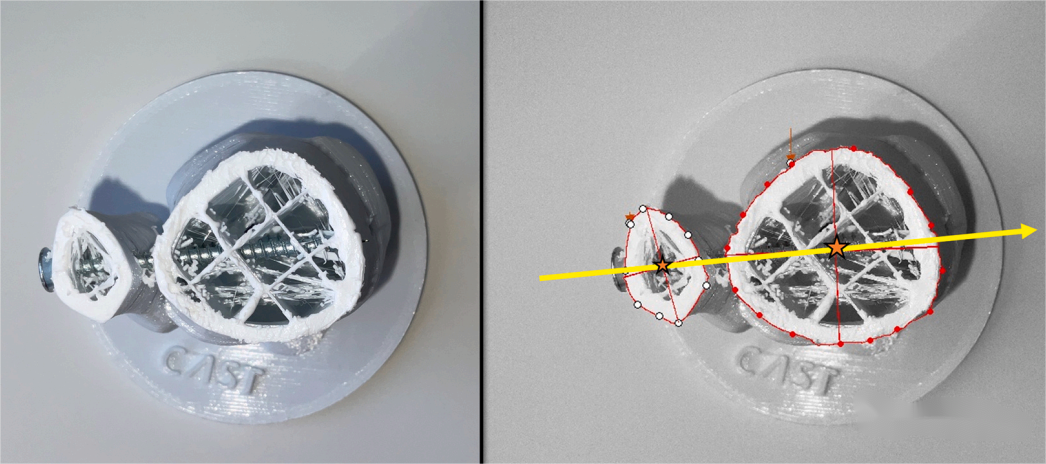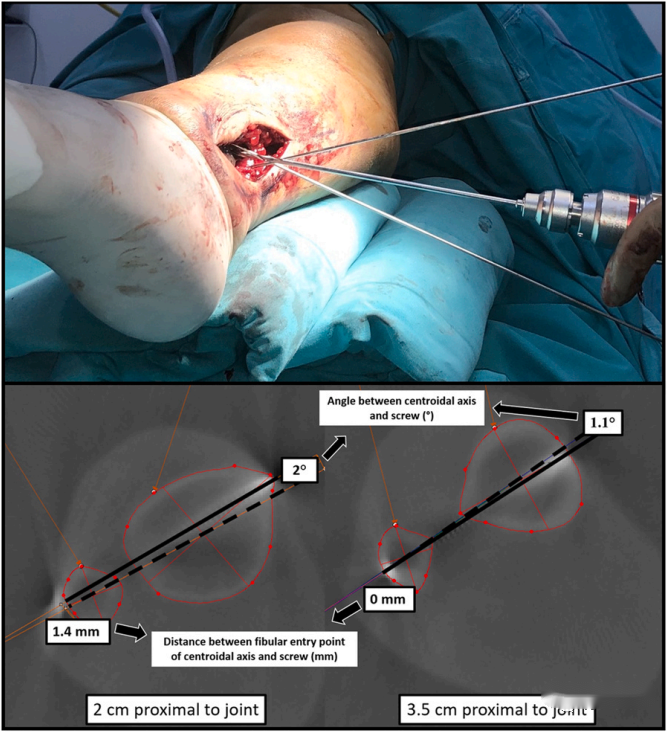"10% e frakturave të kyçit të këmbës shoqërohen me dëmtim të sindesmozës distale tibiofibulare. Studimet kanë treguar se 52% e vidave distale tibiofibulare rezultojnë në reduktim të dobët të sindesmozës. Vendosja e vidës distale tibiofibulare pingul me sipërfaqen e artikulacionit të sindesmozës është thelbësore për të shmangur keqreduktimin jatrogjenik. Sipas manualit AO, rekomandohet të futet vida distale tibiofibulare 2 cm ose 3.5 cm mbi sipërfaqen artikulare tibiale distale, në një kënd prej 20-30° me planin horizontal, nga fibula në tibia, me kyçin e këmbës në një pozicion neutral."

Futja manuale e vidave tibiofibulare distale shpesh rezulton në devijime në pikën dhe drejtimin e hyrjes, dhe aktualisht, nuk ka një metodë të saktë për përcaktimin e drejtimit të futjes së këtyre vidave. Për të adresuar këtë çështje, studiuesit e huaj kanë miratuar një metodë të re - metodën e 'përgjysmuesit të këndit'.
Duke përdorur të dhëna imazherike nga 16 nyje normale të kyçit të këmbës, u krijuan 16 modele të printuara në 3D. Në distanca prej 2 cm dhe 3.5 cm mbi sipërfaqen artikulare tibiale, dy tela Kirschner 1.6 mm paralel me sipërfaqen e artikulacionit u vendosën afër skajeve të përparme dhe të pasme të tibisë dhe fibulës, përkatësisht. Këndi midis dy telave Kirschner u mat duke përdorur një raportor, dhe një majë shpimi 2.7 mm u përdor për të shpuar një vrimë përgjatë vijës së përgjysmuesit të këndit, e ndjekur nga futja e një vide 3.5 mm. Pas futjes së vidës, vida u pre përgjatë gjatësisë së saj duke përdorur një sharrë për të vlerësuar marrëdhënien midis drejtimit të vidës dhe boshtit qendror të tibisë dhe fibulës.


Eksperimentet me mostra tregojnë se ekziston një konsistencë e mirë midis boshtit qendror të tibisë dhe fibulës dhe vijës së përgjysmuesit të këndit, si dhe midis boshtit qendror dhe drejtimit të vidës.



Teorikisht, kjo metodë mund ta vendosë në mënyrë efektive vidën përgjatë boshtit qendror të tibisë dhe fibulës. Megjithatë, gjatë operacionit, vendosja e telave Kirschner afër skajeve anteriore dhe posteriore të tibisë dhe fibulës përbën rrezik për dëmtimin e enëve të gjakut dhe nervave. Përveç kësaj, kjo metodë nuk e zgjidh çështjen e reduktimit të keq jatrogjenik, pasi shtrirja distale tibiofibulare nuk mund të vlerësohet në mënyrë adekuate intraoperative para vendosjes së vidave.
Koha e postimit: 30 korrik 2024










